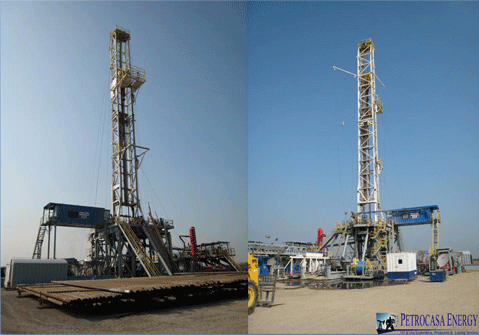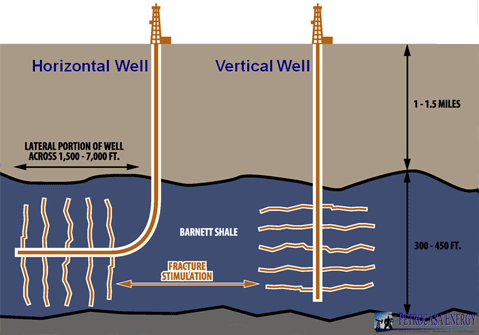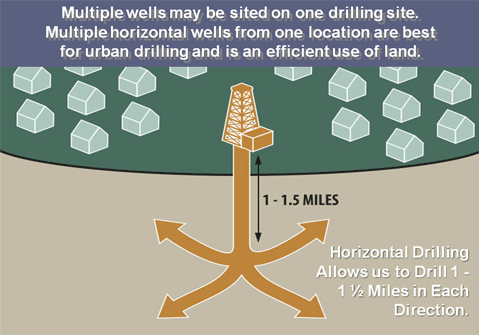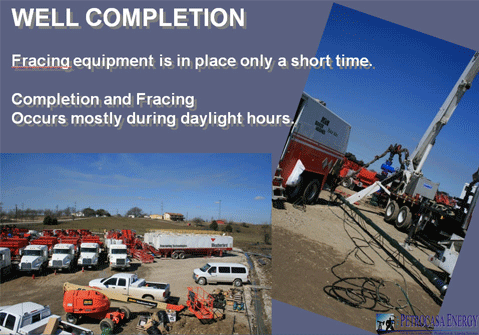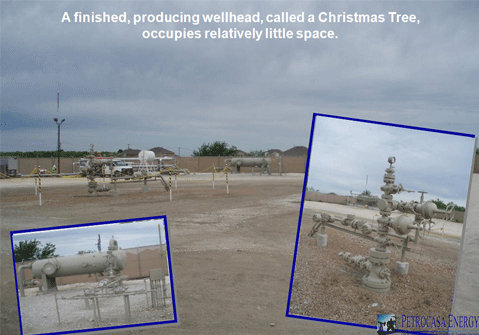 |
|

APPALACHIA • EAST TEXAS • FORT WORTH BASIN • LOUISIANA • ROCKIES • WEST TEXAS
Drilling ProcessesThroughout the drilling process, various equipment will be used at the drilling site. Initially, you will see bulldozers to clear and setup the location. When the drilling rig is moved to the location, many large trucks are required. Trucks will also be used to deliver other necessary equipment and materials. A drilling rig, usually about 120 and 145 feet tall, will be set up, and a crew will be on site 24/7 to manage and oversee the drilling operations which usually lasts around 2 to 4 weeks. Operators drill through solid rock to get to the natural gas reserves that lie almost one and a half miles deep under the surface.
Horizontal/Directional drilling In a straight or vertically drilled well, the weight of the drill string acts with gravity to guide the drill bit perpendicular to the ground surface. In a directionally drilled well, specially designed tools are used to guide the drill bit in a specific direction. Directional drilling minimizes the disruption to the surface land, as multiple reserves of natural gas may be accessed from the same site, simply by changing the direction in which the drilling occurs.
Hydraulic Fracturing Hydraulic fracturing involves the use of water to break up the rock and shale that holds reserves of natural gas. Water, mixed with sand in some cases, is pumped into the ground at a high pressure, and breaks the rock so that the reserves of natural gas may be released. Hydraulic fracturing is commonly referred to as "fracing" in the natural gas industry. This process takes about one day to complete. Refracting Refracting is the same as hydraulic fracturing - but involves revisiting an existing well site to generate additional breaks in the underground formations holding natural gas. This process allows companies to produce larger quantities of natural gas from existing well locations, limiting the need to drill additional wells in the area. Refracting an existing gas well takes about one day to complete and many occur about every three years.
Well Completion and Clean Up After the well is drilled, storage tanks and equipment used to separate the gas from any liquids in the well may be installed. Meters, pumps, and other safety equipment are also installed. The area is cleaned up and then fenced for safety. Artificial lift, which may be needed onsite to continue to assist with the flow of gas from the location.
|
Contact Information
DALLAS FORT WORTH |
||||||||||||||||||||
|
Home | Team | Services | Project Management | Due Diligence | Title Research | Advanced GIS | Lease Acquisition | ROW Acquisition | Seismic | Pangaea Land | Landowner Info Copyright 2009 Petrocasa Energy Inc. | All Rights Reserved. Web Design by SEO Company Redspot Design |
